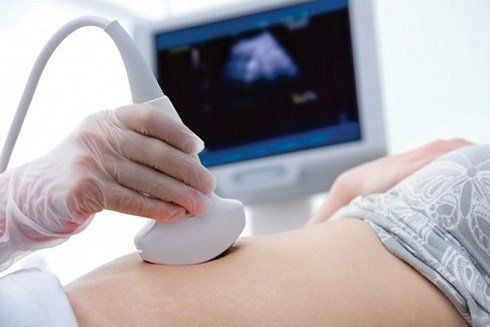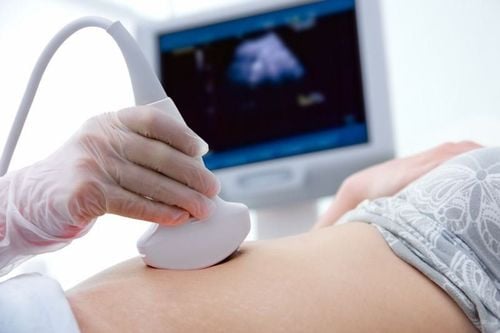This is an automatically translated article.
The article was written by Master, Doctor Nguyen Nhu Thu Truc - Obstetrician and Gynecologist - Department of Obstetrics and Gynecology - Vinmec Nha Trang International General Hospital.
There are many warning signs of fetal distress such as meconium in the amniotic fluid, abnormal fetal heart rate, green or yellow amniotic fluid, ... endangering the life of the mother and the fetus.
1. What is fetal distress in labor?
Fetal failure in labor is one of the three most common causes of birth death. This is a state of hypoxia while the fetus is in the uterus, leading to redistribution of stored oxygen and causes metabolic acidosis. Fetal failure in labor not only leaves many sequelae for the child's later psychomotor and motor development, but also directly threatens the life of mother and baby during childbirth.2. Signs of fetal distress in labor

3. Causes of fetal failure in labor
Cause from the mother's side: The mother has anemia such as excessive bleeding in labor, low blood pressure or chronic anemia... Lying position: if the mother lies on her back a lot, the uterus will press on the aorta, causing blood flow is impeded. It should be noted that during labor, the mother should not lie down much, can exercise gently, or in a half-lying, half-sitting position, lying on the left side, ... to help the placenta circulate well. Pre-existing chronic diseases: If the mother has chronic diseases such as diabetes, heart failure, infections, obesity, it is also easy to cause fetal distress. Uterine contractions: These uterine contractions will disrupt the utero-placental circulation for about 15-60 seconds and reduce the blood flow to the fetus by 50%, especially at the end of labor. . If uterine contractions appear many, continuous and prolonged, it will lead to pregnancy failure. Causes from the fetus's side Preterm pregnancy Premature pregnancy: If the placenta is past the due date, the placenta is often calcified, causing the oxygen supply through the placenta to be affected, leading to fetal distress Deformity, infection, pregnancy growth retardation .. Causes from fetal appendages Placental failure, placenta previa, placenta previa ... Prolapsed umbilical cord, knotted umbilical cord, umbilical cord wrapped around the neck many times .. Early rupture of membranes causes amniotic fluid depletion One Some other causes such as: difficult labor due to abnormal position, prolonged labor and pushing, anesthetic drugs, pain relievers, if used at the wrong dose, can also cause fetal distress.4. Management of fetal distress during labor

In case of rupture of membranes, immediately check for prolapse of the umbilical cord to find a way to push up in the lying position - on the stomach. If it is necessary to transfer the pregnant woman to an upper level, she must keep the woman in this correct position, compress the vagina with gauze to avoid lying on her back for a long time because it can make the condition worse.
With the comprehensive maternity care program at Vinmec International General Hospital, pregnant women will have regular follow-up visits with the examination of obstetricians throughout the pregnancy until labor to develop early warning signs of fetal distress in utero.
During labor, pregnant women will be monitored and cared for according to standard procedures and protocols, especially a relative will be allowed to enter the delivery room to accompany the mother. In addition, the clinic and delivery room are always fully equipped with fetal heart monitors and have an oxygen system available to immediately supply to the mother when needed.
Customers can directly go to Vinmec Health system nationwide to register for maternity package or please contact hospitals and clinics of Vinmec Health system nationwide
Please dial HOTLINE for more information or register for an appointment HERE. Download MyVinmec app to make appointments faster and to manage your bookings easily.














